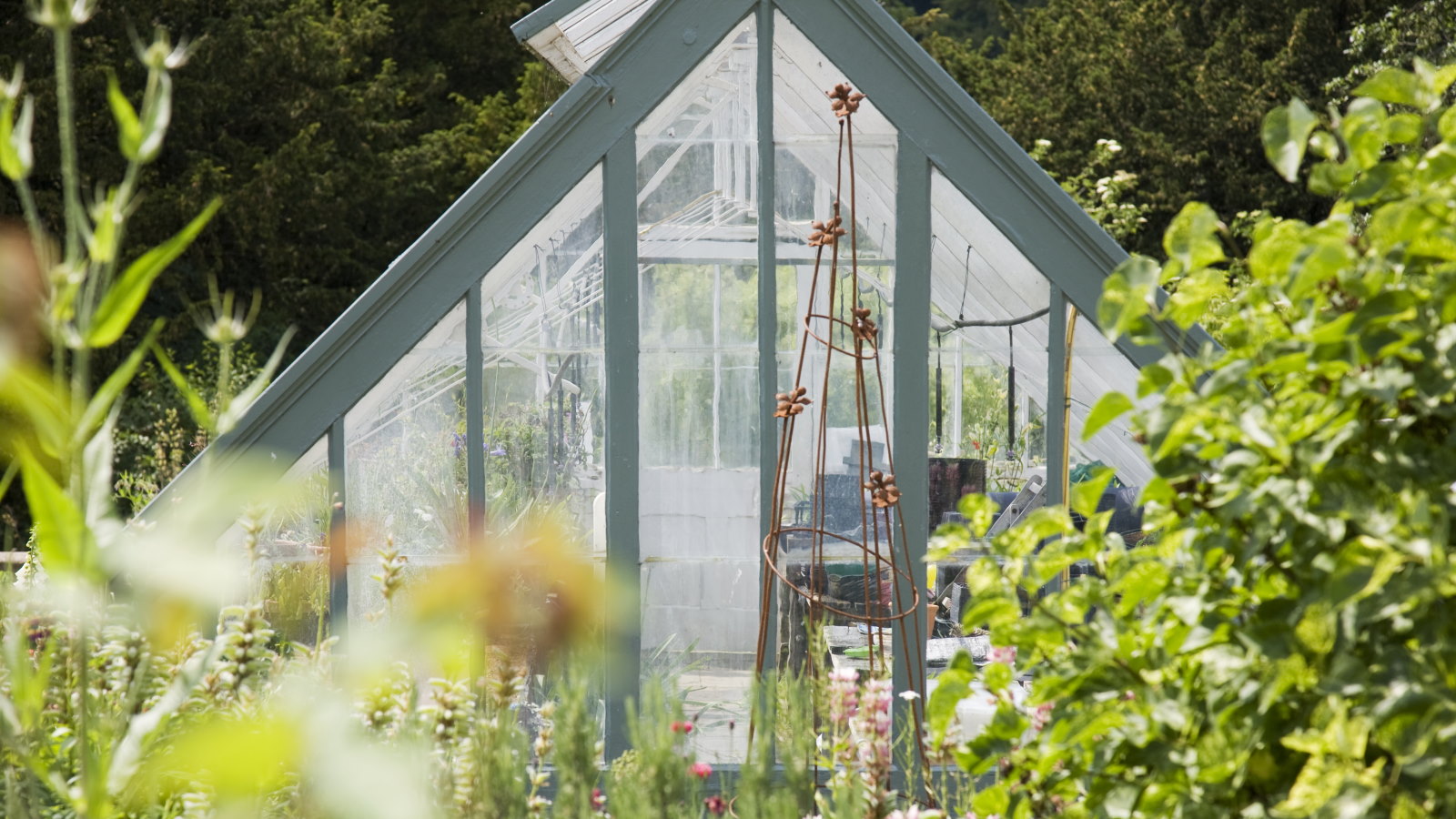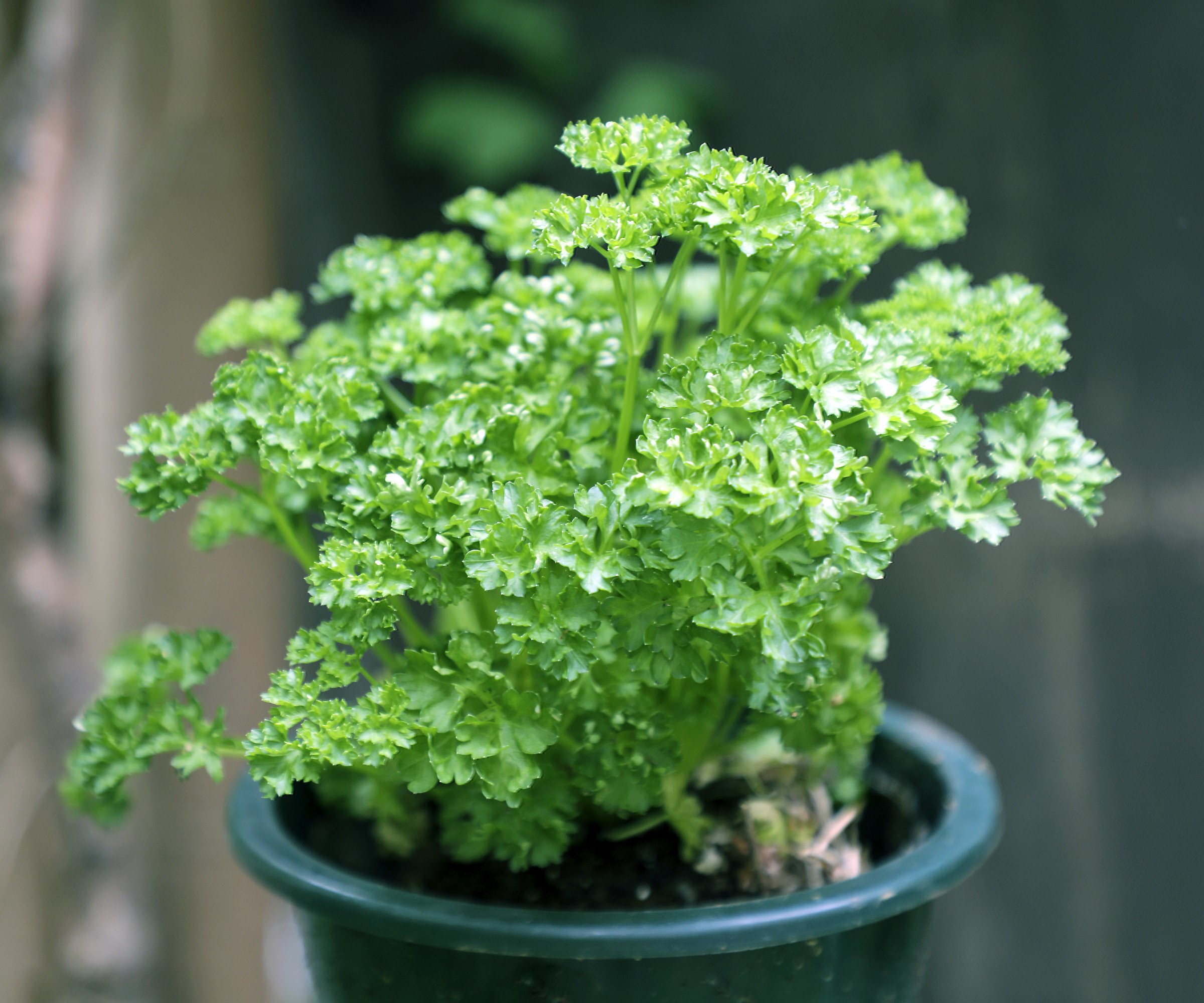
A greenhouse extends the potential opportunities for growing plants throughout the cold winter months. As the temperatures drop outside in the garden, the greenhouse offers a protected environment to continue growing plants.
If you grow vegetables in the greenhouse, out go the summer heat-loving crops and now it is the time for cool-weather vegetables that can provide harvests through winter. Tender plants can also be brought indoors into the greenhouse in November to continue growing and seeds can be sown to get ahead for next year.
When planning a greenhouse, try to keep it full of plants and productive year-round. While much of the garden outside slows down, a greenhouse can be full of activity this month. Here is our guide to some of the best plants to grow in a greenhouse in November.

What to plant in a greenhouse in November
Whether you have a large heated backyard greenhouse or a small DIY greenhouse, there are vegetables, flowers, and herbs which can be grown indoors in November.
1. Winter salads

A great selection of nutritious and delicious winter leaves will grow happily in cool temperatures in an unheated greenhouse. Provided they are protected from frosts, these fast-growing vegetables can be picked as cut-and-come-again crops throughout the colder months.
‘Winter lettuce varieties such as ‘All Year Round’ are perfect for continuous harvests through the colder months’ recommends Nelly Hall, brand director at bespoke glasshouse manufacturer Alitex. ‘Sown in trays or beds every four weeks, you can enjoy fresh leaves like mizuna, arugula and pak choi all winter.’
As well as the leafy greens mentioned above, corn salad, spinach, and mustard greens can also be sown directly into greenhouse beds this month and harvested throughout the winter.
'All Year Round' is an award-winning and hardy cultivar of butter head lettuce. Harvest between 65 and 75 days after planting
2. Radishes

Radishes are another simple fast-growing vegetable that will enjoy the cooler conditions of a winter greenhouse. Whether you grow oval or elongated radish varieties, seeds sown directly into the ground or raised beds will germinate quickly this month and provide a harvest of radishes for winter salads.
Nelly Hall recommends succession sowing radishes over the colder months for a continual harvest. ‘They mature in just six to eight weeks, making them a perfect addition to your winter greenhouse, and with careful sowing, you’ll have a fresh crop ready to enjoy by Christmas,’ she adds.
If you do not have beds in the greenhouse to plant radishes, you can grow radishes in pots instead and get a winter harvest of peppery roots. See a wide selection of radish seeds to sow at Burpee.
3. Carrots

If you have a deep well-draining bed or raised beds inside your greenhouse, root vegetables can be grown over the winter. For example, growing carrots in a greenhouse over winter can provide you with a harvest of roots in early spring. Carrots germinate well at temperatures of 55-65°F and will thrive in a cool, protected environment over winter.
To grow carrots indoors, sow the seeds directly into the soil around a half-inch deep and keep them moist to boost germination. An alternative is to grow carrots in deep containers filled with light potting soil.
For something a little bit different, consider growing different colors of carrots, rather than just the common orange ones, such as the ‘Kaleidoscope Blend’ of carrot seeds, available at Burpee.
4. Microgreens

Microgreens are in vogue and are now often seen garnishing plates at high-end restaurants. Indeed, I grew a wide range of microgreens year-round in a greenhouse for a Michelin-star restaurant.
There are several benefits to growing microgreens in a greenhouse. The young seedlings are simple to grow, don’t take up too much space, and are packed with flavor and nutrients. There is a fantastic range of the best microgreens to choose from too, including pea shoots, arugula, spinach, beets, cress, and many more.
Sow the seeds densely on the surface of a tray filled with compost and cover thinly with soil or vermiculite. Place them somewhere light and warm, keep them moist, and the seeds should germinate quickly. The microgreens can be harvested when they are 1-2 inches tall and have developed their first true leaves.
Discover the range of microgreen seeds available at True Leaf Market
5. Herbs

Growing herbs in a greenhouse in winter allows the plants to continue growing so you can harvest them throughout the colder months.
If you have a herb garden made up of containers or have dedicated herb planters, they can be brought indoors in November to provide flavorful fresh winter harvests. Alternatively, lift and pot up clumps to overwinter in a greenhouse.
The likes of chives, parsley, mint, cilantro, dill, rosemary, and thyme will all grow happily in a greenhouse in November and beyond. The greenhouse will be filled with the glorious scents from these aromatic herbs and the fresh pickings can be added to many winter dishes.
6. Geraniums

Tender perennials such as geraniums, also known commonly as pelargoniums, can be brought indoors into a greenhouse in November to continue growing over winter.
Geraniums are only hardy in US hardiness zones 9-12. Some growers treat them as annuals but they can be kept as perennial plants if you overwinter geraniums indoors. Potted geraniums will keep growing over the winter in a greenhouse as long as the temperatures stay above freezing. Just make sure to reduce the watering over the colder months to avoid root rot.
There are many other tender heat-loving plants to bring indoors in November to protect them from frosts and cold nights, such as dahlias, citrus trees, cannas, and begonias. Many of these can happily overwinter in a greenhouse, citrus trees in particular will provide great fragrance and interest in a greenhouse over the colder months.
7. Sweet peas

Doing early sowings of some plants in a greenhouse in November can be a great way to get ahead for next year’s growing season. Sweet peas are an ideal annual flower that can be sown in the fall for stronger plants and earlier blooms next spring. Planting sweet pea seeds in November is best done in individual pots, as the plants develop extensive root systems quickly.
‘Keep them in long pots and pinch out the growing tips to encourage a robust root system,’ advises Nelly Hall. ‘They can stay in the greenhouse until after the last frost, when they’ll be ready to plant outside and soon blossom into beautiful, fragrant flowers you can enjoy throughout spring and summer.’
Discover the range of sweet pea seeds at True Leaf Market
FAQs
What flowers can grow in an unheated greenhouse in winter?
Flowers such as violas, pansies, calendula, snapdragons, impatiens, and chrysanthemums can successfully grow in an unheated greenhouse during the winter. At this time, you can sow seeds indoors for many flowers including sweet peas, snapdragons, lupines, delphinium, and dianthus, which will help to produce lots of flowers early in the spring.
Can you grow cucumbers in a greenhouse in winter?
Cucumbers are a crop that likes warmth and temperatures above 65°F. The plants will start to suffer at temperatures below 55°F and cold snaps will severely damage them. Growing cucumbers is best suited to the summer months. The growing season can be extended in a heated greenhouse with grow lights, but the results will not outweigh the expense involved. Cucumbers are annual plants that only last one season and cannot be overwintered to continue growing next year.
Can you grow peppers in a greenhouse during winter?
Peppers are often cultivated as annuals but grow as perennials in their native regions across Latin America. Growing peppers during winter is simple to do with plants growing in pots. To overwinter pepper plants, bring them into a cool greenhouse that stays above 55°F and has good light levels. Cut back the plants and keep them moist but not too wet over winter. The plants will survive dormant over winter and start growing again when the temperatures rise in spring.
The winter months offer a fantastic time to clean a greenhouse. A deep cleaning of floors and benches can combat potential plant diseases and cleaning the glass will mean the maximum amount of sunlight can reach your plants during the darker months. Cleaning and decluttering as part of winterizing a greenhouse will get your growing space into the best shape ahead of the next season.







